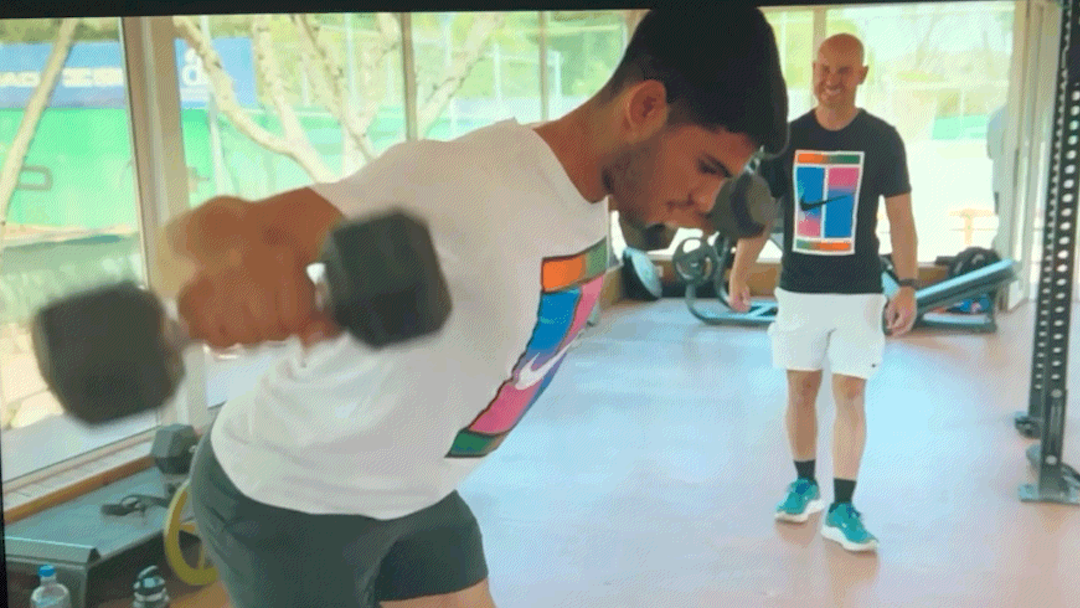
In the fall of 2021, I played a practice match at a local area high school where someone had chalk-marked spots for cardio fitness circuits. Each exercise was scrawled on the court along the sidelines and fence. The corner where the fence intersected with a cinderblock backboard was marked for 30-second wall sits. I wrote a post about that particular exercise at the time but didn’t follow up on all the other exercises. Over the next few Tuesdays, I will be correcting that oversight.
The hip flexors play a major role in balance and stability when hitting tennis groundstrokes. While the glutes, hamstrings, and quads also play a significant role, tennis players’ muscles tend to be underworked because the stronger hip flexors dominate the kinetic chain. Wall sits are a great way to address that muscular imbalance by isolating the underutilized quadriceps.
Tennis players with stronger quads are better at changing direction on the court and staying low on the ball. Consequently, it makes sense to perform exercises to strengthen those muscles. Paradoxically, I don’t recall wall sits ever being in vogue for tennis-specific training when I was growing up. While writing the original post about this exercise in 2021, I was astonished to discover that none of the tennis training books in my personal library included instructions for wall sits.
The basic wall sit is executed by leaning against a wall with 90-degree angles in the hips, knees, and ankles—like sitting in an invisible chair. The feet should be hip-width apart and parallel to each other. The knees should be directly over the ankles and in line with the feet. This particular fitness station prescribed a 30-second duration for holding the wall sit position. Other internet sources challenge people to build up to 3-5 minutes. I feel like that is a sick joke. I am hard-pressed to achieve 30 seconds.
In the intervening time since that original post was published, I came across a video from the USPTA that illustrates a tennis-specific variation on the traditional wall sit. Paradoxically, I can layer in the additional motion recommended in that video while holding the position for much longer than 30 seconds. This is yet another example of more intense exercise being somehow easier with a racquet in my hand. That is a part of the magic behind the superior health benefits of tennis.
Wall sits significantly benefit tennis athletes by targeting underutilized quadriceps, enhancing balance, stability, and directional agility. Adding this exercise to your fitness routine can address muscular imbalances and improve competitive performance. Tennis players should never overlook this seemingly small exercise because it can be leveraged to achieve big results.



